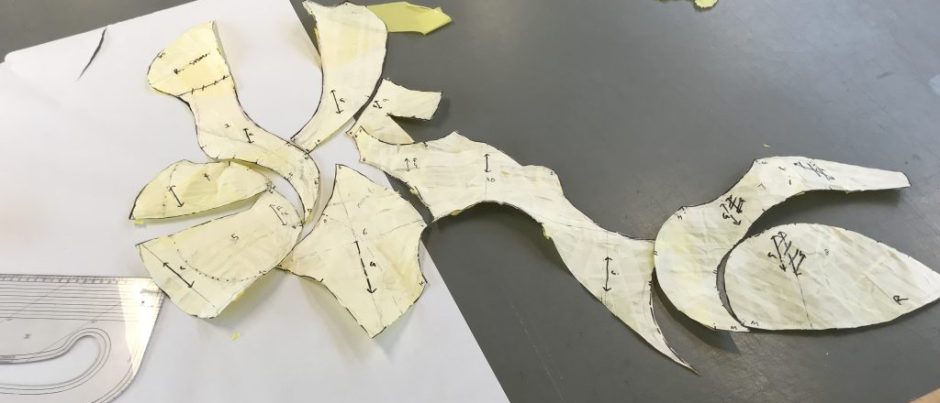I started by choosing to read Callender’s ‘The Role of Aesthetic Judgement in Psychotherapy’ (2005). Although I found the links between the arts and psychotherapy fascinating, I struggled to recognise whether or not I was fully understanding this dense and theoretical paper. I went on to read The Enchantment of Learning (Curry, 2007). I found the language in this paper more accessible, and the emotional charge of this article very interesting.
The reading of these papers led me to consider how the pre-existing knowledge (or lack thereof) profoundly affects a student’s capacity to engage. Feeling as though something is too far beyond your reach is very demotivating. If I had more of a base of knowledge around these topics, I am certain I would have been far more engaged with the content presented. This is directly applicable to my own technical teaching, whereby many students enter the costume workroom with little or no experience in this specialist area of performance making. In order to engage everyone as best I can, careful scaffolding is necessary.
Preparation for workshop 1
I was assigned preparatory reading of ‘The design critique and the moral goods of the studio’ (McDonald and Michela, 2019) to read ahead of the first workshop. After struggling to read the first two articles, I was delighted to find that I enjoyed the experience of reading this paper, and read it much faster than I would have expected myself to. I think this was partly aided by the way in which I had set the scene – printing the paper out, choosing a quiet time of day, and surrounding myself with coloured pens. This made me think about the ways in which I set a
scene for learning in the costume studio, which may or may not meet the needs of any one student.
The subject of this paper was directly applicable to my personal experiences of interacting with students in the studio environment, which gave me a genuine enthusiasm for the detail of the research findings. This led me to consider the students’ enthusiasm when learning construction techniques for a costume for a production, compared to learning construction techniques as samples. The obvious, immediate, and direct relevance of the information (technique, or tool) provides profound motivation. If I could incorporate some sense of immediate relevance into my workshop designs, this may serve as a motivator for students. Alongside Curry’s article (2017), the content of this paper made me notice and think deeply about my own ‘moral goods’ and motivations as an educator, alongside those of my colleagues.
Preparation for workshop 2
As someone who experiences great joy in drawing, I was immediately drawn to Salamon’s research as my chosen reading ahead of the second workshop (2018). I found the simplicity and clarity of this article inspiring. Memorising, learning, or developing ideas through drawing and/or physical movement is something I would like to explore and understand more about in relation to my own teaching practice.
(498 words)
References
Callender, J. (2005) ‘The Role of Aesthetic Judgments in Psychotherapy’. Philosophy, Psychiatry, & Psychology. 12(4). Pp.283-295. Available at: https://doi.org/10.1353/ppp.2006.0019. (Accessed: 22nd December 2023).
Curry, P. (2017) ‘The Enchantment of Learning and ‘The Fate of our Times’. In Voss, A. and
Wilson, S. (eds.) Re-Enchanting the Academy. Seattle: Rubedo Press. Pp.33-51. Available at: http://www.patrickcurry.co.uk/papers/The%20Enchantment%20of%20Learning%20(print%20version).pdf (Accessed: 22nd December 2023).
McDonald, J. K. and Michela, E. (2019) ‘The design critique and the moral goods of studio pedagogy’, Design Studies. 62. Pp.1–35.
Salamon, M (2018) ‘Drawing laboratory: Research workshops and outcomes’. Spark: UAL Creative Teaching and Learning Journal. 3(2). Pp. 13
